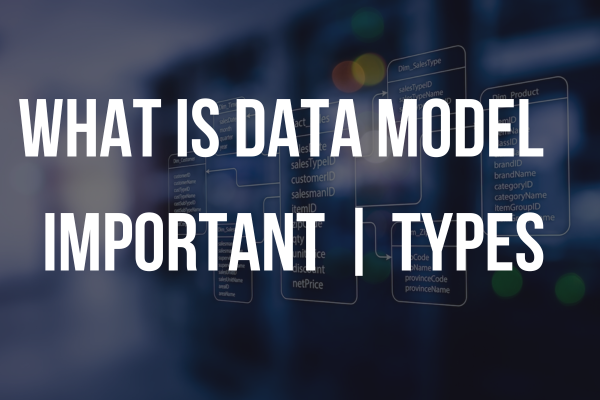In today’s digital age, data is considered the new gold. Every organization, big or small, collects and analyzes data to gain insights and make informed decisions. But before any data analysis can take place, it needs to be structured in a way that makes sense. This is where a data model comes into play.
What is a Data Model?
A data model is a conceptual representation of data and its relationships to other data. It defines how data is organized, stored, and accessed. It can be thought of as a blueprint or a map of a database that describes the various entities, attributes, and relationships between them.
Why is Data Modeling Important?
Data modeling is an essential step in database design. It helps ensure that data is organized and stored in a way that is logical, efficient, and scalable. Without a proper data model, data can become inconsistent, redundant, and difficult to manage. This can lead to data quality issues, which in turn can impact decision-making and business outcomes.
Data modeling also helps in the development of software applications. By providing a clear understanding of data structures and relationships, data models make it easier to develop applications that can interact with the database.
Types of Data Models
There are several types of data models, including:
- Conceptual data model: This is a high-level model that defines the entities and their relationships. It does not provide details about the attributes of the entities.
- Logical data model: This model defines the structure of the database in terms of entities, attributes, and relationships. It is independent of any specific database management system (DBMS).
- Physical data model: This model defines the structure of the database in terms of tables, columns, and data types. It is specific to a particular DBMS.
- Object-oriented data model: This model defines data in terms of objects, classes, and their relationships. It is used in object-oriented programming.
- Hierarchical data model: This model represents data in a tree-like structure, with parent and child nodes. It is commonly used in mainframe environments.
- Network data model: This model represents data as a set of records that can have multiple parent and child relationships. It is commonly used in legacy systems.
How to create a data model?
Creating a data model involves the following steps:
- Identify the entities: Identify the objects or concepts that need to be represented in the data model. For example, in a sales database, entities could include customers, products, orders, and salespeople.
- Define the relationships: Identify the relationships between the entities. For example, in a sales database, a customer can place many orders, and an order can contain multiple products.
- Define the attributes: Identify the characteristics or properties of each entity. For example, for the customer entity, attributes could include name, address, and phone number.
- Normalize the data: Normalize the data to eliminate redundancy and improve data integrity. This involves breaking down large tables into smaller ones and linking them through relationships.
- Validate the data model: Validate the data model to ensure that it meets the requirements of the business and is scalable.
Conclusion
A data model is a critical component of any database design. It provides a clear understanding of the data structure and relationships, making it easier to manage data and develop software applications. By following the steps outlined in this article, you can create a robust and scalable data model that meets the requirements of your business.





Leave a Reply